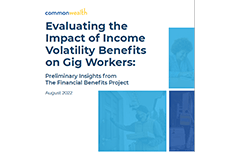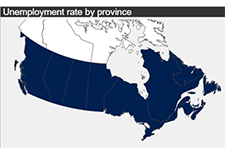Discover financial empowerment resources
Discover financial empowerment resources
As life expectancy in the U.S. increases, older adults will comprise a larger share of the population than ever before. At the same time, older adults will play an increasingly important role in the U.S. economy. Their contributions through consumption, labor, and unpaid activities—such as...

Practically everyone today seems to have some form of debt. Whether that’s from student loans or credit cards, debt is a huge issue for Canadians—one that we could all use a little help to get out of. To gain some relief, people all over the world have turned to side hustles and the “gig...

Gig workers account for approximately 25 to 35% of the national workforce. When considering workers earning low to moderate incomes (LMI), these percentages are likely higher. Gig work provides reported advantages including flexibility, supplemental income, and independence. However, it also brings...

Part of the Canadian Labour Market Observatory, this interactive data visualization application showcases publicly available labour market information. The fully interactive applications allow Canadians to quickly and easily personalize the information in a way that is relevant to them and...

Last year marked the seventh straight year of solid employment gains in Canada following the recession. But, scratching beneath the surface shows the credit went solely to part-time positions. Steep losses in energy-producing provinces are only partially to blame for the decline in full-time...
A substantial number of immigrants are not only blocked from entering the professions for which they trained and were then recruited to Canada, but a substantial portion of them are not in any type or form of secure employment. Instead, Canadian newcomers often face substandard, precarious and...
This is a fact sheet about the gender wage gap in Canada. The gender wage gap is the difference in earnings between women and men in the workplace. It is a widely recognized indicator of women’s economic equality, and it exists to some extent in every country in the world. A 2015 UN Human Rights...
This paper introduces two new concepts to the debate on job quality: the low-wage gap and low-wage intensity. These two measures provide information on the depth and severity of low wages. Using Labour Force Survey microdata, we discuss trends in these two measures, along with trends in the...
